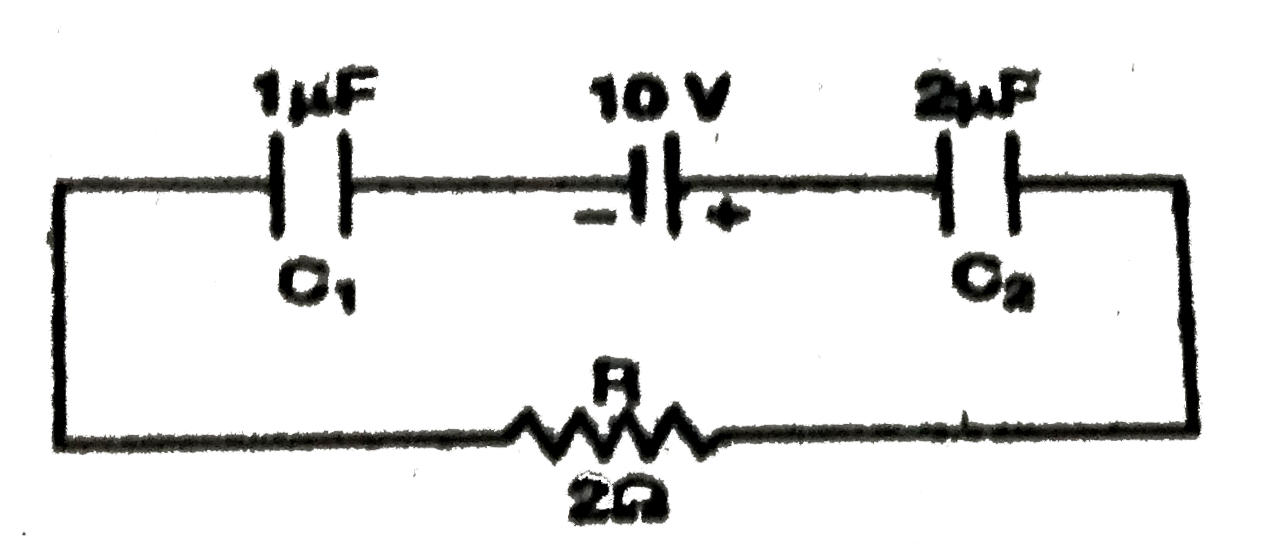Assertion : In series combination, charges on two capacitors are always equal.
Reason : If charges are same, the total potential difference applied across two capacitors will be distributed in inverse ratio of capacities.
If both Assertion and Reason are true and the Reason is correct explanation of the Assertion.
If both Assertion and Reason are true but Reason is not the correct explanation of Assertion.
If Assertion is true, but the Reason is false.
If Assertion is false but the Reason is true.
The correct Answer is:D
Charges are same, if initially the capacitors are uncharged.
Further,
Hence
if same
Related Playlists
- BOOK - DC PANDEY ENGLISHCHAPTER - CAPACITORSEXERCISE - OBJECTIVE_TYPE1videos
CAPACITORS
- BOOK - DC PANDEY ENGLISHCHAPTER - CAPACITORSEXERCISE - OBJECTIVE_TYPE1videos
CAPACITORS
- BOOK - DC PANDEY ENGLISHCHAPTER - ATOMSEXERCISE - MEDICAL ENTRANCES GALLERY42videos
ATOMS
- BOOK - DC PANDEY ENGLISHCHAPTER - COMMUNICATION SYSTEMEXERCISE - Subjective11videos
COMMUNICATION SYSTEM
Similar Questions
Find the potential difference and charge on each capacitor.
 View Solution
View SolutionFind charge on each capacitor and potential difference across each capacitor .
 View Solution
View SolutionA 10V battery is connected to two capacitors C1 and C2 and a resistor R. When the capacitors are fully charged, then the potential difference across the resistor will be
 View Solution
View SolutionAssertion- In a series combination of capacitors, charge on each capacitor is same.
Reason- In such a combination, charge cannot move only along one route.View SolutionThe 500μF capacitor is charged at a steady rate of 100μC/s. The potential difference across the capacitor will be 10 V after an interval of
View SolutionThe 500μF capacitor is charged at a steady rate of 100μC/s. The potential difference across the capacitor will be 10 V after an interval of
View SolutionA capacitor is charged steadily from a DC source. Correct variation of potential difference across the plates of capacitor with charge on the plates of capacitor is
View SolutionA series combination of three capacitors of capacities 1μF,2μF and 8μF is connected to a battery of e.m.f. 13 volt .The potential difference across the plates of 2μF capacitor will be
View SolutionIn the given circuit, with steady current, calculate the potential difference across the capacitor and the charge stored in it.
View SolutionIf A is connerted with D and B is connected with C find the potential difference a across each capacitor and the final charge in each capacitor.
View Solution


